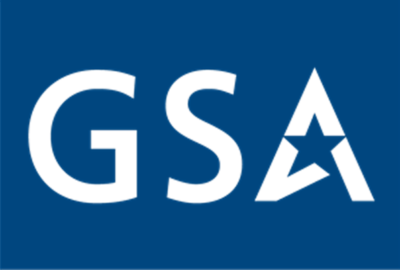
Hubbard Radio Washington DC, LLC. All rights reserved. This website is not intended for users located within the European Economic Area.
Hubbard Radio Washington DC, LLC. All rights reserved. This website is not intended for users located within the European Economic Area.
The General Services Administration awarded 70 veteran-owned small businesses a spot on a governmentwide IT services contract.
Subscribe to Federal Drive’s daily audio interviews on iTunes or PodcastOne.
The General Services Administration’s Federal Acquisition Service is kicking off fiscal 2018 with a bang.
FAS released three requests for information and made a major governmentwide acquisition contract (GWAC) award in just the last week. And this is just the first few weeks of the fiscal year, while industry expects the fall and winter to remain busy.
Let’s start with the award, because that’s a sure thing.
GSA hired 70 small service-disabled, veteran-owned firms for the $5 billion Veterans Technology Services (VETS 2) GWAC.
“Building on the success of the first generation solution, GSA has performed an unprecedented amount of market research for VETS 2 and is proud to offer these services from such highly qualified, innovative firms,” Kay Ely, assistant commissioner of GSA’s Office of Information Technology, said in a release.
The potential 10-year indefinite delivery, indefinite quantity contract is for a variety of IT services, including software development, systems design, IT operations and maintenance, new and emerging technologies, information management, and information and communications technology.
The first VETS GWAC was moderately successful, accounting for $2 billion in sales over the last decade.
A protest of VETS 2 is still highly possible. GSA received 187 proposals, so there are 117 unhappy vendors.
In the meantime, FAS issued three RFIs that provide a glimpse into its future thinking.
The most interesting of the three is the one GSA is collaborating with the White House’s Office of American Innovation to obtain support for “key initiatives and projects under four Centers of Excellence (COEs) for four key technology initiatives.”
The initiatives include:
The vendor will support the program management office to oversee the technology initiatives, including establishing metrics and providing shared resources.
“Industry support will cover a wide range of activities, including project management assistance/guidance, acting as the support catalyst for completing all plans/activities, creating a centralized approach to track progress against metrics, associated Executive-level interactive dashboards, and agile project management/change management support,” GSA stated in the RFI. “Critical to this is ensuring all processes have a positive effect, and that progress reporting is of minimal burden on the teams.”
Responses to the RFI are due by Nov. 1.
GSA anticipates awarding a multiple award contract for three years.
An interesting aside already in the RFI process: In its initial RFI, the agency included the requirement for vendors to sign a non-disclosure agreement that would’ve prohibited them from bidding on implementation work governmentwide. But GSA amended the RFI two days after initial issuance and removed the conflict of interest provision, and instead restricts “any use of inside information learned during the project as procurement sensitive.”
It will be interesting to see how industry reacts to this change, as this seems to benefit several large consultant vendors, but puts others at a potential competitive disadvantage when bidding on the implementation work.
The second interesting RFI is to revamp Schedule 70 to improve how the government meets the MEGABYTE Act of 2015, and the Office of Management and Budget’s third attempt to improve federal management of $6 billion in software purchasing from June 2016.
GSA is proposing to change how agencies buy software from the IT schedule, specifically around term licenses, perpetual licenses, and evolving the concept of software maintenance-as-a-service.
“In order to properly delineate ‘term’ licenses under SIN 132-32 and to keep those licenses distinct from any form of cloud products available under SIN 132-40 (Cloud Computing Services), ‘term software licenses’ have been redefined so that they are only applicable to software that is provisioned and executed from the ‘user’s servers, computing end-points, or other designated computing devices where the user has the right to load or deploy software,’” GSA stated. “Additionally, the requirement to convert term licenses into perpetual licenses has been modified so that it is only required when an offeror offers the same conversions to their commercial customers.”
GSA then is updating the concept of a perpetual license. It says it isn’t changing the definition, but creating two options for vendors to include in their offerings.
“Option 1 contemplates software vendors that will embed software identification tags in their software products that are consistent with the ISO/IEC 19970-2 standard,” the RFI states. “Option 2 contemplates software vendors that will allow incumbent software licensees a right to transfer or move perpetual licenses to a new licensee for a previously negotiated fee. It is intended that these new asset management rights and features are voluntary, meaning that software vendors who wish to offer them may optionally include them on their schedule contract.”
Finally, GSA would delete software maintenance-as-a-service and replace it with software maintenance-as-a-product.
“Software maintenance-as-a-product, henceforth, will be the maintenance that software vendors charge for on an annual basis. Because software maintenance-as-a-product has not been previously identified with its own special item number (SIN) and because it is a component of a term license or perpetual license acquisition, it has been difficult to track the federal government’s actual spend on annual software maintenance,” the RFI states. “Under the current software maintenance SIN structures, it is impossible to differentiate a software purchase from an annual software maintenance purchase. Providing software maintenance-as-a-product with its own SIN identifier allows the federal government to better manage software as an asset and appropriately track categories of spend by differentiating between software licenses and software maintenance.”
Responses to this RFI are due by Nov. 24.
The third RFI is actually a follow-on from one in February and may have the biggest impact on every vendor. GSA continues to pursue an alternative to the legal identifier of businesses currently provided by Dun & Bradstreet.
GSA issued both a new RFI as well as a draft performance work statement for industry to comment on.
“The government is exploring all viable means of continuing to meet its ongoing need for entity identification and validation services after the contract’s expiration,” GSA stated in a release.
GSA said the first RFI from February received “numerous” responses, but didn’t say how it influenced the second RFI.
In the latest RFI, GSA seeks answers to seven questions focused primarily on the draft statement of work.
The draft PWS states GSA is looking to meet both business and technical objectives.
Under the business objectives, GSA highlighted its need to “determine entity uniqueness, which could include the assignment and/or use of a unique entity identifier in perpetuity, validation of certain entity data, and associated services,” to validate data for contracting officers or others in making an award and determination of responsibility; an approach to understand the hierarchy and family tree of an entity; and “a method to determine relevant information about an entity that is being excluded from doing business with the government.”
Under the technical objectives, GSA said it needs the vendor to transmit data in real-time for validation services, to make sure the data is in machine-readable formats and doesn’t require any custom software and to encrypt all data in transit and at-rest.
The RFI and draft statement of work received a lot of attention in industry.
Hudson Hollister, the founder and executive director of the Data Coalition, has been a vocal supporter of GSA moving away from D&B and lauded this second RFI.
“Neither Dun & Bradstreet nor any other company should be permitted to retain a proprietary interest in the identification code that is used within the registration system,” Hollister said in an email to Federal News Radio. “GSA actually specifies in the [draft] PWS that a new identifier must be ‘available for public use at the federal government’s discretion.’ This is encouraging. GSA, therefore, should ensure in their recompete process that whoever runs the registration system for the next five years allow taxpayers and the public to freely download and use federal contract and grant spending information. Last week’s statements suggest open data is winning.”
A Dun & Bradstreet spokesman also welcomed the RFI and draft PWS.
“Dun & Bradstreet is pleased to participate in the General Services Administration’s process to fill the government’s need for entity identification and validation services,” the spokesman said in an email. “The federal government has leveraged the Duns number for the past 40 years because it provides critical data and insights into the government’s business partners and programs, including beneficial ownership, company hierarchy linkage and historical financial data, as well as other information that the government needs to effectively manage and run its operations. Dun & Bradstreet believes that our government partners will continue to find value in what we deliver to support the federal government across a multitude of missions.”
The government slowly has been preparing for the end of the Dun & Bradstreet contract, which expires in 2018. In 2015, the Federal Acquisition Regulations Council issued a proposed rule and finalized it in September 2016 removing any proprietary references of DUNs numbers or D&B for identifying vendors.
It’s still unclear if D&B will lose its 40-year hold on identifying federal contractors, but the recognition is clear that change is coming.
Copyright © 2024 Federal News Network. All rights reserved. This website is not intended for users located within the European Economic Area.
Jason Miller is executive editor of Federal News Network and directs news coverage on the people, policy and programs of the federal government.
Follow @jmillerWFED


